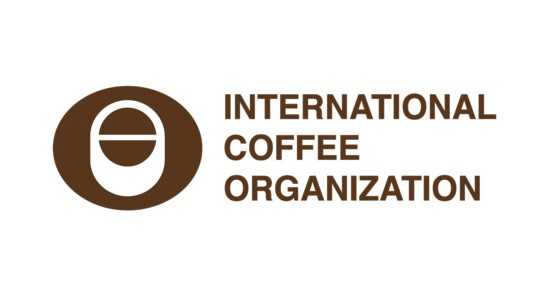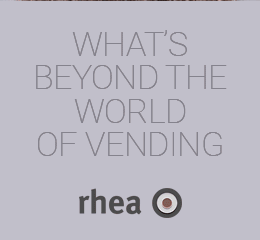LONDON, UK – The latest market report of the International Coffee organization shows a sharp rise in global coffee prices during the month of June. The monthly average of the ICO composite indicator rose by 7.1% to 99.97 US cents/lb in June 2019, which is the first increase in the monthly average since January 2019.
In May 2019, world coffee exports rose by 19.4% to 11.6 million bags compared to May 2018 while exports in the first eight months of coffee year 2018/19 rose by 7.5% to 86.57 million bags, says the London-base Organization.
Demand for coffee appears to be strong as imports by ICO importing Members and the United States, which account for around 75% of global imports, increased by 4.9% to 66.56 million bags in the first six months of coffee year 2018/19.
Global coffee consumption is estimated to grow by 2% to 164.64 million bags in coffee year 2018/19. Despite the ongoing demand growth, a global production surplus of 3.11 million bags is expected in coffee year 2018/19.
The ICO composite indicator averaged 99.97 US cents/lb in June 2019, 7.1% higher than in May 2019. This was the first increase in the monthly average since January 2019, when prices rose by 0.9% to 101.56 US cents/lb. The daily composite indicator ranged between 95.17 US cents/lb on 18 June and 105.25 US cents/lb on 28 June. The daily price rose above 100 US cents/lb for the first time since 18 February 2019 on 30 May and remained above that level on 9 out 20 days during the month of June.
Average prices for all group indicators rose in June 2019. Prices for Brazilian Naturals experienced the largest increase, averaging 100.69 US cents/lb, 9.5% higher than in May 2019. Robusta prices grew by 4.1% to 74.02 US cents/lb.
Colombian Milds increased by 7.3% to 133.49 US cents/lb while Other Milds rose by 7.6% to 129.73 US cents/lb. As a result of these price movements, the differential between Colombian Milds and Other Milds in June 2019 fell by 2.3% to 3.76 US cents/lb, compared to May 2019, which follows three months of increase.
In June, the arbitrage between Arabica and Robusta coffees, as measured on the New York and London futures markets, rose by 20.4% to 39.03 US cents/lb. Intra-day volatility of the ICO composite indicator price increased by 1.8 percentage points to 8.9% as the intra-day volatility of all group indicators rose.
Amongst the Arabica group indicators, the intra-day volatility of Other Milds rose by 2.2 percentage points to 9%, of Brazilian Naturals by 2 percentage points to 11%, and of Colombian Milds by 1.9 percentage points to 8.5%. The intra-day volatility of Robusta increased to 8.6%, 1.3 percentage points higher than last month.
In May 2019, world coffee exports rose by 19.4% to 11.6 million bags compared to May 2018. This growth was led by shipments of Brazilian Naturals, which rose by 65.4% to 3.5 million bags. However, in May 2018, shipments were well below expectations due to a nationwide trucking strike that delayed delivery of coffee to ports.
Brazil’s May exports averaged 2.73 million bags from 2013 to 2017. Robusta exports grew by 8.3% to 4.05 million bags in May 2019 compared to the same month one year ago. Significant growth in Robusta shipments from Brazil, where exports of green Robusta rose from 46,621 bags to 376,257 bags as well as increases in exports from Tanzania and Uganda offset the 5.1% decline in Vietnam’s green Robusta shipments. Exports of Colombian Milds grew by 6.1% to 1.15 million bags while Other Milds increased by 4.4% to 2.9 million bags.
Global exports in the first eight months of coffee year 2018/19 reached 86.57 million bags, an increase of 7.5% compared to the same period one year ago. Shipments of Brazilian Naturals rose by 21.9% to 28.22 million bags while Colombian Milds increased by 6.8% to 10.13 million bags. Robusta exports increased by 3% to 30.65 million bags in October 2018 to May 2019 while Other Milds fell by 3% to 17.57 million bags.
Imports by ICO importing Members and the United States, which on average account for around 75% of global imports, increased by 4.9% to 66.56 million bags in the first half of coffee year 2018/19. Imports by the EU in October 2018 to March 2019 rose by 3.5% to 42.71 million bags, and those of the United States increased by 8.1% to 14.98 million bags. Imports by Japan grew by 13.5% to 3.92 million bags, and the Russian Federation by 4.9% to 2.77 million bags. In contrast, Switzerland’s imports declined by 7.4% to 1.53 million bags in the first six months of coffee year 2018/19. Imports by Norway and Tunisia increased by 1.3% to 364,958 bags and 12.9% to 282,259 bags, respectively.
Brazil was the largest source of coffee imports by the European Union, accounting for 20.9% of its imports in October 2018 to March 2019. This was followed by Viet Nam (15%), Colombia (3.8%), Peru (3.6%) and Honduras (3%). Imports from Brazil and Viet Nam increased by 12.5% to 8.92 million bags and by 5% to 6.41 million bags in the first half of coffee year 2018/19. However, imports from Colombia declined by 2.7% to 1.63 million bags and from Honduras by 4.8% to 1.3 million bags. Peru’s shipments to the European Union increased by 6.5% to 1.54 million bags.
Imports from Brazil and Colombia accounted for 52.4% of imports by the United States in the first six months of coffee year 2018/19. Viet Nam represented 10.2%, Mexico 5.7% and Peru 5.1% of US imports.
Shipments from the five largest origins increased in October 2018 to March 2019 except from Viet Nam where they declined by 19.7% to 1.53 million bags. US imports from Brazil increased by 24.5% to 4.33 million bags and from Colombia by 11.4% to 3.52 million bags. Shipments from Mexico amounted to 855,799 bags, 6% higher than in October 2017 to March 2018, and from Peru rose by 20% to 767,411 bags.
Similar to the European Union and the United States, Brazil, Viet Nam and Colombia were the main origins for Japan’s imports in the first half of coffee year 2018/19, accounting for 38.6%, 20.4%, and 12.3%, respectively. Indonesia and Ethiopia, representing 7.2% and 6% of Japan’s imports, were the next two largest suppliers. Imports from Brazil rose by 36.4% to 1.52 million bags, from Ethiopia by 22.4% to 235,787 bags, and from Indonesia by 15.3% to 283,614 bags. However, imports from Colombia fell by 23.4% to 481,734 bags while imports from Viet Nam were almost unchanged, increasing by 0.6% to 800,568 bags.
Viet Nam and Brazil were the two main origins imported by the Russian Federation in October 2018 to February 2019, accounting for 30.8% and 20.9%, respectively. India represented 7.5% of total imports. However, Germany (9.6%) and Italy (6.1%) were important origins for imports by the Russian Federation.
Nearly 50% of imports by the Russian Federation were of roasted (11.5%) or soluble (36.9%) coffee during this period. This is a much higher share of processed coffee than the other large importers where green coffee imports tend to account for around 90% of imports, except in the European Union where roasted coffee imports represented 20.1% of total imports.
Global coffee production is estimated at 167.75 million bags in coffee year 2018/19, compared to global consumption of 164.64 million bags. Although the increase in imports during the first six months of the coffee year indicates ongoing demand growth, it has not kept pace with the rise in global production in the last two years. As a results, there is a surplus of 3.11 million bags in coffee year 2018/19 following a surplus of 3.84 million bags in coffee year 2017/18.


















